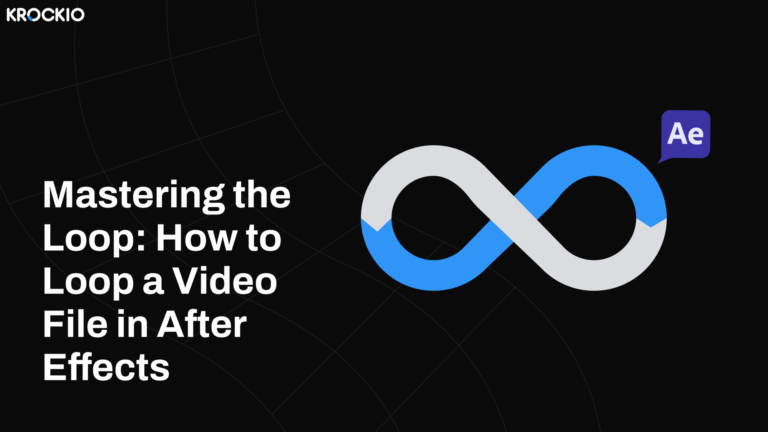Video production has undergone a significant transformation over the last decade. The rise of digital media has led to an explosion of content, with video taking center stage. From social media platforms to corporate training videos, video content has become ubiquitous, with businesses and individuals alike recognizing its importance in engaging audiences and delivering their message effectively.
At the same time, technological advancements in the field of artificial intelligence (AI) have led to new possibilities in video production, with AI-based tools and software being developed to enhance the quality and efficiency of video production processes. In this article, we will explore the ways in which AI is revolutionizing video production, its benefits, challenges, and future trends.
Applications of AI in Video Production
One of the primary applications of AI in video production is in the area of video editing. Traditionally, video editing has been a labor-intensive and time-consuming process that requires significant skill and expertise. However, with the advent of AI-based video editing tools, this process has become more streamlined and efficient.
AI algorithms can analyze video footage and identify the most interesting and relevant sections, allowing editors to focus on the creative aspects of their work.
Another area where AI is being applied in video production is in the generation of content. AI can generate text, images, and even entire videos, based on specific inputs and parameters. This technology has significant implications for video production, as it can automate the creation of content, reducing the need for human labor and increasing efficiency.
AI is also being used to enhance the quality of video content. For example, AI algorithms can automatically color-correct video footage, reducing the need for manual intervention. Similarly, AI can be used to remove noise and other artifacts from video footage, leading to a cleaner and more professional-looking final product.
Benefits of AI in Video Production
The use of AI in video production has several benefits, including:
Increased efficiency: AI-based tools can automate many aspects of video production, leading to significant time savings and increased productivity.
Improved quality: AI algorithms can enhance the quality of video content, making it more engaging and professional-looking.
Cost savings: By automating certain aspects of video production, AI can reduce the need for human labor, leading to cost savings for businesses and individuals alike.
Enhanced creativity: By automating routine tasks, AI can free up video editors and other creatives to focus on the more artistic aspects of their work.
Challenges of AI in Video Production
While the benefits of AI in video production are significant, there are also several challenges that must be addressed. One of the primary challenges is the need for accurate data. AI algorithms rely on large amounts of data to function effectively, and this can be a challenge in the field of video production. Creating and maintaining a database of high-quality video footage can be expensive and time-consuming.
Another challenge is the need for skilled personnel. While AI can automate many aspects of video production, there is still a need for skilled personnel to oversee the process and ensure that the final product meets the desired standards. This can be a challenge in an industry that is constantly evolving and requires a diverse range of skills.
Finally, there are ethical considerations to be taken into account when using AI in video production. For example, AI-generated content raises questions about copyright and ownership. Additionally, there is a risk that AI-generated content could be used to spread disinformation or propaganda.
AI-Based Video Enhancement Tools
AI is also being used to enhance the quality of video content, making it more engaging and professional-looking. One of the primary ways in which this is being done is through the use of AI-based video enhancement tools.
One such tool is Topaz Video Enhance AI, which uses machine learning algorithms to increase the resolution of video footage, making it sharper and more detailed. The software can also remove noise and other artifacts from video footage, leading to a cleaner and more professional-looking final product.
Another AI-based video enhancement tool is Red Giant’s Magic Bullet Suite, which offers a range of color correction and grading tools. The software uses machine learning algorithms to analyze video footage and suggests color corrections, making the process faster and more efficient.
AI-Based Video Captioning Tools
AI is also being used to automate the process of captioning video content. Captioning is important for making video content accessible to a wider audience, including people with hearing impairments and non-native speakers.
One AI-based video captioning tool is Rev, which uses speech recognition algorithms to automatically generate captions for video content. The software can also be used to translate captions into multiple languages, making video content accessible to a global audience.
Another AI-based captioning tool is Descript, which offers a range of features, including automated transcription, captioning, and translation. The software uses machine learning algorithms to analyze audio and video content, making the process of captioning faster and more efficient.
How does AI-powered video analytics help in determining audience engagement?
AI-powered video analytics is a powerful tool for determining audience engagement with video content. By analyzing data on viewer behavior and engagement, AI algorithms can provide valuable insights into the effectiveness of video content and identify areas for improvement. In this article, we will explore how AI-powered video analytics helps determine audience engagement and some of the metrics used to measure it.
Understanding Audience Engagement
Audience engagement refers to the level of interaction and interest that viewers have in video content. This can include factors such as the length of time that viewers watch a video, the number of times that they replay a particular section, and the level of social sharing or commenting that takes place around the video.
AI-powered video analytics tools can be used to measure a range of metrics that provide insights into audience engagement with video content. By tracking these metrics over time, businesses can identify patterns and trends in viewer behavior and use this information to improve the effectiveness of their video content.
Metrics Used to Measure Audience Engagement
View Count: View count is the most basic metric used to measure audience engagement with video content. It simply measures the number of times that a video has been viewed, and provides a rough indication of the popularity of the content.
Play Rate: Play rate measures the percentage of viewers who click the play button on a video after landing on the page. This metric is useful for understanding the effectiveness of the video’s title, thumbnail, and other elements that influence whether or not viewers choose to watch the video.
Watch Time: Watch time measures the total amount of time that viewers spend watching a video. This metric provides insights into the level of engagement and interest that viewers have in the content.
Engagement Rate: The engagement rate measures the percentage of viewers who engage with a video in some way, such as by liking, sharing, or commenting on the video. This metric is useful for understanding the level of emotional connection that viewers have with the content.
Average View Duration: Average view duration measures the average amount of time that viewers spend watching a video. This metric provides a more granular view of viewer behavior than total watch time, allowing businesses to identify specific sections of the video that may be less engaging.
Click-Through Rate (CTR): CTR measures the percentage of viewers who click through to a website or landing page from a video. This metric provides insights into the effectiveness of calls to action and other elements that encourage viewers to take action.
Future Trends in AI and Video Production
The future of AI in video production is exciting, with several emerging trends that have the potential to transform the industry even further.
One of these trends is the use of AI in virtual reality and augmented reality. AI algorithms can help to create immersive and interactive experiences, allowing users to engage with the video content in new and exciting ways.
Another trend is the use of AI in live streaming. Live streaming has become increasingly popular in recent years, with platforms like Twitch and YouTube Live attracting millions of viewers. AI-based tools can be used to enhance the quality of live streams, reducing buffering and improving video and audio quality.
AI can also be used to personalize video content, tailoring it to the preferences and interests of individual viewers. By analyzing data on viewer behavior, AI algorithms can make recommendations for content that is likely to be of interest, increasing engagement and retention.
Finally, AI can be used to automate the production of short-form video content, such as social media posts and advertisements. By automating the creation and distribution of this type of content, businesses can increase their reach and engagement without the need for significant human labor.
Conclusion
AI is transforming the video production industry, offering new possibilities for efficiency, quality, and creativity. While there are challenges to be addressed, such as the need for accurate data and skilled personnel, the benefits of AI in video production are significant.
With the emergence of new trends, such as the use of AI in virtual reality and live streaming, the future of video production looks set to be even more exciting and innovative. As AI continues to evolve, we can expect to see even more possibilities emerge, transforming the industry in ways that we can only imagine.
Check out more articles on getting started with Krock.io:
- Storyboard AI – Generate Storyboard Online in a few clicks
- The Art of Documentary Filmmaking: Telling Real Stories through Video
- How To View A Video Frame By Frame
If you’re having any trouble or need any help, let us know.










